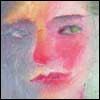When the Russian army approached Auschwitz in the beginning of 1945, the Nazis evacuated the death camp. The inmates were forced to march towards Germany, on what would become known as the Death March. The Nazis shot anyone who fell behind, could no longer walk (and there were so many . . .), or just because. More than 15,000 are estimated to have died on this march.
The young girl from Auschwitz survived the march, and ended up in Neustadt Glewe, near Frankfurt-on-Oder in Germany. It was officially a “work camp,” but she was very sick, probably with typhus, running a high temperature and barely able to move, and certainly in no condition to work. The Jewish woman in charge of the barracks suggested that she go to the infirmary; if she was registered in the infirmary, she would be exempt from work.
The infirmary was a distance of about three blocks from the barracks, but in her feverish and emaciated state it took the girl almost two hours to get there. When she arrived, she saw the patients, half-dead, lying naked on the cots, since when a patient came to the infirmary the doctors would take her filthy clothes and burn them. The girl had a nightgown in the barracks that she had somehow salvaged from Auschwitz. There was no way she would lie there naked, so she turned around and dragged her weakened body back to the barracks—another two hours—to retrieve the precious garment.
The barracks leader saw her, and suggested that she lie down to rest a while before she returned to the infirmary. Since the girl had no strength to move anyway, she took this advice. A short while later the barracks leader returned and told her that there was no longer any need to return to the infirmary. The Nazis had taken out all the patients and had murdered them . . .
Less than a month later, the girl was liberated. She lived to marry and have children, grandchildren and great-grandchildren.
The girl is my mother, Perel Schulkind, may she live and be well.







Join the Discussion